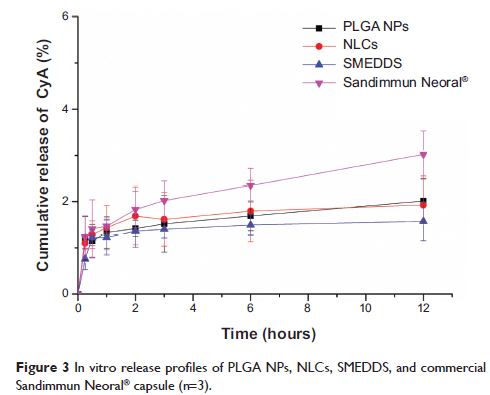109451
论文已发表
注册即可获取德孚的最新动态
IF 收录期刊
- 3.4 Breast Cancer (Dove Med Press)
- 3.2 Clin Epidemiol
- 2.6 Cancer Manag Res
- 2.9 Infect Drug Resist
- 3.7 Clin Interv Aging
- 5.1 Drug Des Dev Ther
- 3.1 Int J Chronic Obstr
- 6.6 Int J Nanomed
- 2.6 Int J Women's Health
- 2.9 Neuropsych Dis Treat
- 2.8 OncoTargets Ther
- 2.0 Patient Prefer Adher
- 2.2 Ther Clin Risk Manag
- 2.5 J Pain Res
- 3.0 Diabet Metab Synd Ob
- 3.2 Psychol Res Behav Ma
- 3.4 Nat Sci Sleep
- 1.8 Pharmgenomics Pers Med
- 2.0 Risk Manag Healthc Policy
- 4.1 J Inflamm Res
- 2.0 Int J Gen Med
- 3.4 J Hepatocell Carcinoma
- 3.0 J Asthma Allergy
- 2.2 Clin Cosmet Investig Dermatol
- 2.4 J Multidiscip Healthc

已发表论文
增强环孢素 A 的口服生物利用度:各种纳米药物输送系统的比较
Authors Wang K, Qi JP, Weng TF, Tian ZQ, Lu Y, Hu KL, Yin ZN, Wu W
Published Date October 2014 Volume 2014:9(1) Pages 4991—4999
DOI http://dx.doi.org/10.2147/IJN.S72560
Received 11 August 2014, Accepted 12 September 2014, Published 28 October 2014
Approved for publication by Dr Lei Yang
Abstract: A variety of nanoscale delivery systems have been shown to enhance the oral absorption of poorly water-soluble and poorly permeable drugs. However, the performance of these systems has seldom been evaluated simultaneously. The aim of this study was to compare the bioavailability enhancement effect of lipid-based nanocarriers with poly(lactic-co-glycolic acid) (PLGA) nanoparticles (NPs) to highlight the importance of the lipid composition, with cyclosporine A (CyA) as a model drug. CyA-loaded PLGA NPs, nanostructured lipid carriers (NLCs), and self-microemulsifying drug-delivery systems (SMEDDS) were prepared. The particle size of PLGA NPs (182.2±12.8 nm) was larger than that of NLCs (89.7±9.0 nm) and SMEDDS (26.9±1.9 nm). All vehicles are charged negatively. The entrapment efficiency of PLGA NPs and NLCs was 87.6%±1.6% and 80.3%±0.6%, respectively. In vitro release tests indicated that the cumulative release of CyA was lower than 4% from all vehicles, including Sandimmun Neoral®, according to the dialysis method. Both NLCs and SMEDDS showed high relative oral bioavailability, 111.8% and 73.6%, respectively, after oral gavage administration to beagle dogs, which was not statistically different from commercial Sandimmun Neoral®. However, PLGA NPs failed to achieve efficient absorption, with relative bioavailability of about 22.7%. It is concluded that lipid-based nanoscale drug-delivery systems are superior to polymeric NPs in enhancing oral bioavailability of poorly water-soluble and poorly permeable drugs.
Keywords: cyclosporine A, PLGA nanoparticle, nanostructured lipid carrier, self-microemulsifying drug-delivery systems, bioavailability
Keywords: cyclosporine A, PLGA nanoparticle, nanostructured lipid carrier, self-microemulsifying drug-delivery systems, bioavailability
